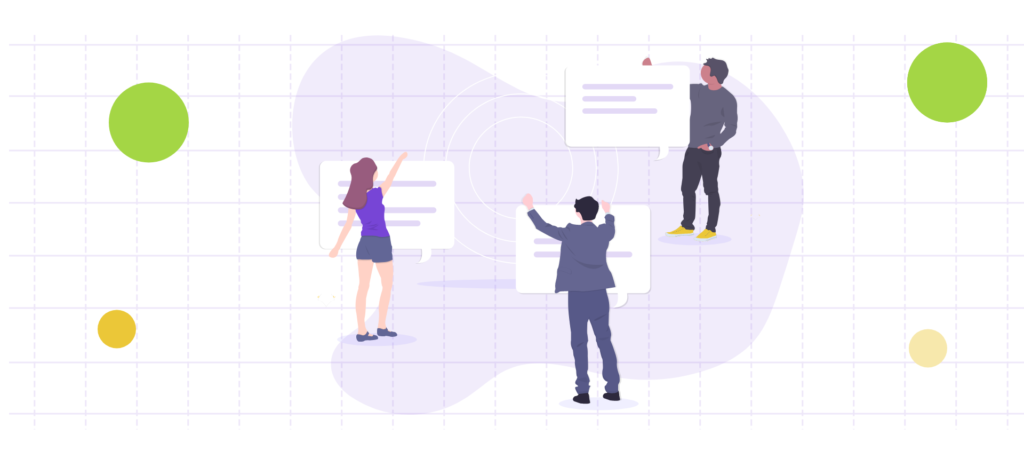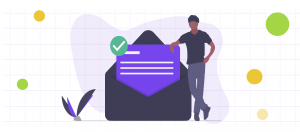Nonprofit Technology Solutions: Unlock the Power of Artificial Intelligence


However, when it comes to finding the right nonprofit technology solutions, nonprofit professionals are often the first to admit that they aren’t experts.
Nonprofit professionals do so many amazing things, like putting the needs of others before their own or raising extraordinary amounts of money for great causes.
While you might not think you have the right set of expertise, you can be the tech genius you always wanted to be. You just need to search for the right tools and resources for you and your organization.
But, search no longer, because we here at Keela have created a list of five ways your nonprofits can use nonprofit technology solutions that are powered by Artificial Intelligence (AI).


Download the Nonprofit CRM Buyer’s Guide
This complete guide will help you evaluate your needs and shortlist CRM vendors so you can invest in the right tool for your organization.
Why is Artificial Intelligence Useful for Nonprofits?
But, before we dive into the five solutions, we must ask ourselves, why focus on technology solutions powered by AI?
Thanks for asking! We’re going to focus on AI because it allows you to get more done while investing less of your precious time and resources.
AI is an umbrella term that captures the capabilities of machines to perform tasks that would typically require human intelligence and cognition.
Under the AI umbrella is the concept of machine learning: the process of applying statistical techniques to data that prepares computers to perform tasks without being explicitly programmed to do so.
For example, Crisis Text Line, a New York City-based nonprofit, used machine learning to analyze 65 million text messages to understand the words most associated with a high risk of suicide. Surprisingly, the term “EMS” was five times more associated with an increased risk of suicide than the actual word “suicide.” This analysis has provided the organization with the ability to respond to 94% of high-risk texts in under five minutes.
This quantity of analysis is impossible for a small nonprofit staff team to perform. But, with AI, these calculations are made quickly and now, affordably.
Crisis Text Line is just one example of how AI can profoundly impact nonprofits. As we will discuss below, AI can do so much more.
Let’s dive into the five nonprofit applications of AI-powered technology
5 Ways Nonprofits Can Take Advantage of Artificial Intelligence
1. Plan a Facebook Fundraiser
Facebook isn’t just a platform where your cousin shares their controversial political views. It’s also a platform that enables you to expand your fundraising for free.
While Facebook fundraising isn’t the most textbook example of AI, it provides fundraisers with an analytics-driven experience and with a whole host of automated features.
Fundraising on Facebook provides your donors with a streamlined donation experience and motivates stakeholders to launch fundraisers on your behalf.
Any nonprofit professional can use Facebook to set up a fundraiser page and donation button, making it easy for donors to contribute without even leaving the website.
To harness the AI capabilities of Facebook, try using their ads to boost the impact of specific campaigns. While they require a bit of a cash investment, you can use paid ads to target specific demographics that match your ideal donor base. Use Facebook ads to engage potential donors and to reengage your already committed donors.
To keep track of the impact of your campaign, you can also download custom reports that detail your fundraiser’s activity.
Pro tip: Apply for Facebook’s Charitable Giving Tools to unlock the full benefits of the platform. Be aware that applications take 2-3 weeks to be reviewed, so apply well in advance of your next campaign.
Facebook is the next shiny tool to add to your fundraising toolbox.
Establish Clear Digital Communication Policies for Your Nonprofit
As more fundraising is done on social media, there is an increasing need for digital policies that protect your organization and employees. Use this guide to develop and communicate essential organizational policies for your nonprofit.
2. Add a Chatbot to Your Nonprofit’s Website
I’m sure, at some point, you’ve been annoyed by a website’s chatbot that just can’t seem to understand what you need. Experiences like these can be really frustrating.
However, when implemented correctly, chatbots can save you operational costs and increase stakeholder satisfaction. What’s more, chatbots work around the clock and can respond to multiple stakeholders at once. Plus, chatbots become more intelligent over time as they learn from their interactions.
Let’s take a look at one successful example of an AI chatbot at work.
Extra Life, Children’s Miracle Network Hospitals’ 24-hour gaming fundraiser, was becoming overwhelmed by Canadian supporters inquiring about what currency was being used to process donations. Extra Life added a chatbot to answer questions related to currency to free up administrative time dedicated to answering enthusiastic Canadians.
Extra Life was even able to design the bot so it would only appear for their Canadian supporters. Overall, the chatbot allowed Extra Life to dedicate less time to repetitive administrative tasks and provide a pain-free donation experience for the Canucks.
As you can see with Extra Life, Chatbots don’t have to be used in a way that frustrates your stakeholders. When used in a specific and targeted way that sets a clear expectation for their purpose, AI-powered chatbots are an incredible resource for any nonprofit.
Here are some of the different chatbot options for your nonprofit:
Pro tip: When signing up for these tools, inquire about discounts or free-trial options for nonprofits!
3. Bring a Technologist onto Your Nonprofit’s Board
Ok, this one may be cheating.
Although recruiting a technologist or data scientist isn’t actually a way that artificial intelligence can improve your organization, they will provide you with an unparalleled level of expertise.
Having someone on your board with relevant, technical experience will give your organization an educated opinion on how best to leverage the power of technology.
Of course, finding someone who aligns with your organization’s mission is also crucial.
So how can you go about doing this? Here are three steps to find the right match.
- Establish a nominating committee: When specific board members are dedicated to finding their next peer, work can be split up systematically. A small task force can coordinate efforts and eliminate the chances of the same inquiries being made multiple times.
- Start with your stakeholders: Your staff, board members, volunteers, and donors have many skills that you may not know about. There may be a technologist among them. If not, they might know someone who would be a great fit.
- Use a Recruitment Website: A simple way to expand your search is by using the digital resources at your disposal. Websites like LinkedIn, Indeed, and Charity Village provide easy-to-use volunteer boards to post your newest opportunity.
Were you looking for something more sophisticated? The Taproot Foundation and Board Source provide a comprehensive set of resources that will help you find qualified candidates.
Pro tip: Ask a prospective board member to join a committee or task force before inviting them to be a long-term member. This way, you can decide whether or not your prospect is a good fit.
4. Use an AI-powered CRM
AI-powered CRMs take the busy work out of nonprofit management and fundraising with their ability to measure, predict, and automate.
See How to Use Keela to Automate Workflows
Get a glimpse of how Keela’s AI-powered nonprofit software helps nonprofits to improve their fundraising and donor engagement strategies with automation.
Measurement: AI has been designed to assess an individual’s likelihood to donate based on their previous giving behavior and wealth indicators.
For example, iWave can segment hundreds or thousands of individuals into a ranked list of prospects with the greatest capacity and inclination to donate a major gift. iWave relies on its industry-leading database of wealth, philanthropic and biographic records to make these smart suggestions.
Also, Keela’s Donor Score tool uses artificial intelligence to rank current donors according to their previous giving behavior. The tool segments donors into categories to determine which ones are most engaged, which ones need a little bit of TLC, and which ones you should thank.
Prediction: For a fundraiser, one of the most challenging predictions to make is how much a donor is willing to give. Well, worry no more! Keela’s Smart Ask tool recommends the ideal amount to ask your donors for by analyzing their previous giving habits. Keela takes into account wealth indicators, donor readiness, and time of year to make it even easier to make the ask.
There is also a new fundraising tool that plugs directly into your CRM. KIT is an AI-powered fundraising insights tool that helps fundraisers raise more money with less effort. Harnessing the power of machine learning, KIT is a tool specifically for fundraisers that can help you optimize your campaigns by predicting and prioritizing exactly which donors are most likely to give.
Automation: One of the significant benefits of an AI-powered CRM is its ability to take care of administrative work. With Keela Automation, fundraisers can create automation “rules” to prompt actions, such as pop-up messages, field updates, and email notifications.
5. Use AI For Hiring
The hiring process for nonprofits is often time-consuming, resource-draining, and extremely tiring. Especially with the high level of turnover in the nonprofit sector, organizations need to make investments in the perfect candidate.
Fortunately, artificial intelligence can take the hassle out of identifying, screening, interviewing, and hiring candidates.
Freshworks, a recruitment software, is a perfect example of an AI-powered hiring system that can be a game-changer for nonprofits.
Let’s take a closer look!
Freshworks improves the efficiency of your hiring team by automating follow-up messages, prioritizing high-value candidates, and archiving exceptional candidates. According to Freshworks, this frees up at least 50% of a recruiter’s time!
I haven’t even gotten to the best part yet!
What’s more valuable to a nonprofit than an intelligent hiring system? An intelligent and free hiring system! Freshworks provides organizations with a free trial where they can publish up to three positions.
So, try it out. . . because it won’t cost you a thing!
Learn How to Hire and Onboard Employees Remotely
For even more help with hiring, use this FREE Toolkit to conduct more effective interviews, create an easy-to-follow onboarding plan, and develop long-lasting policies for future hires.
For many in the nonprofit sector, “artificial intelligence” sounds like a complicated and inaccessible concept. But, it doesn’t have to be that way!
With the steps outlined above, your organization can use AI to save time and money on administrative work so you can spend more resources on the work that matters most.





